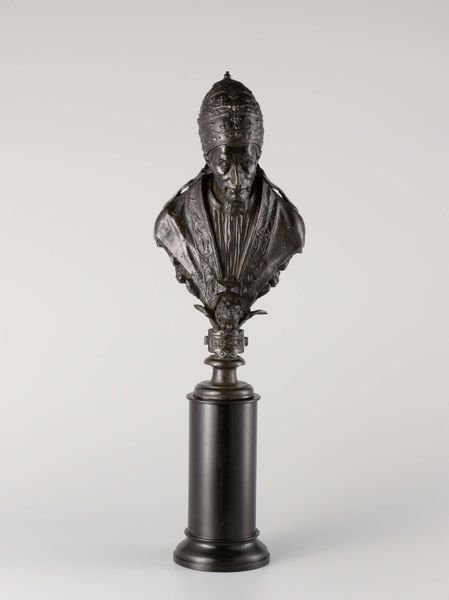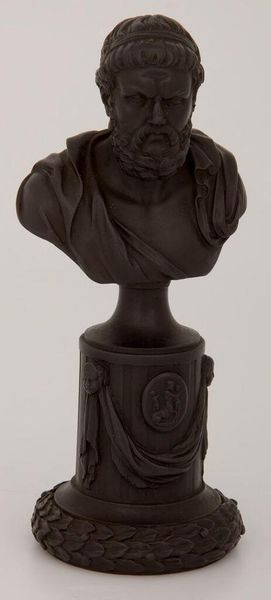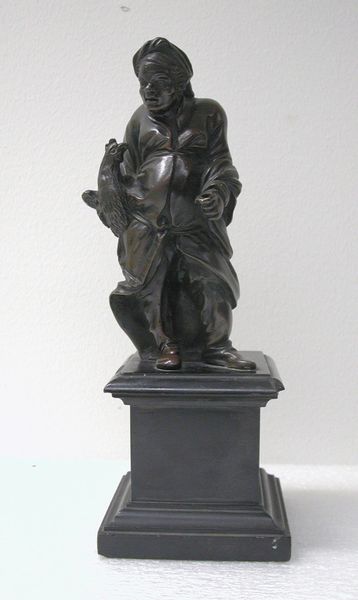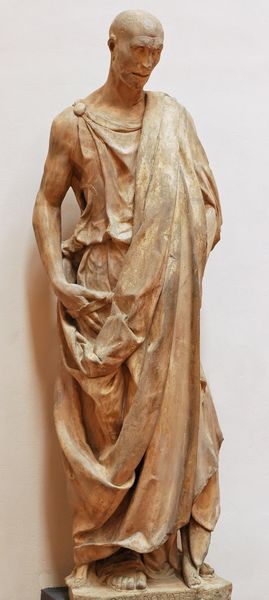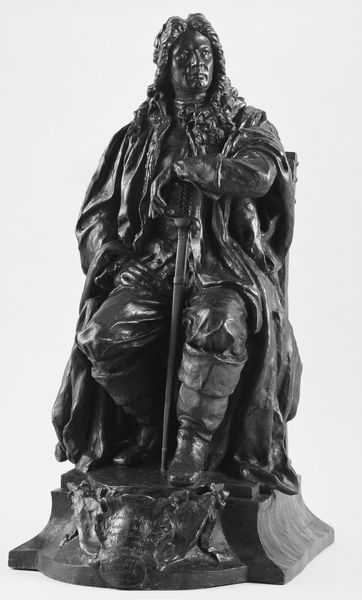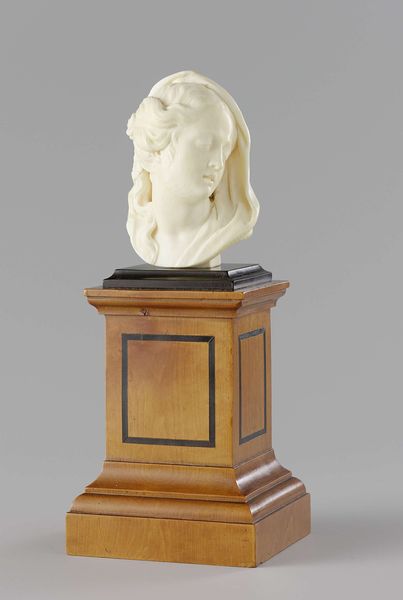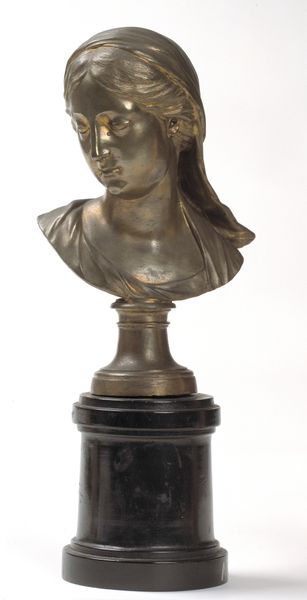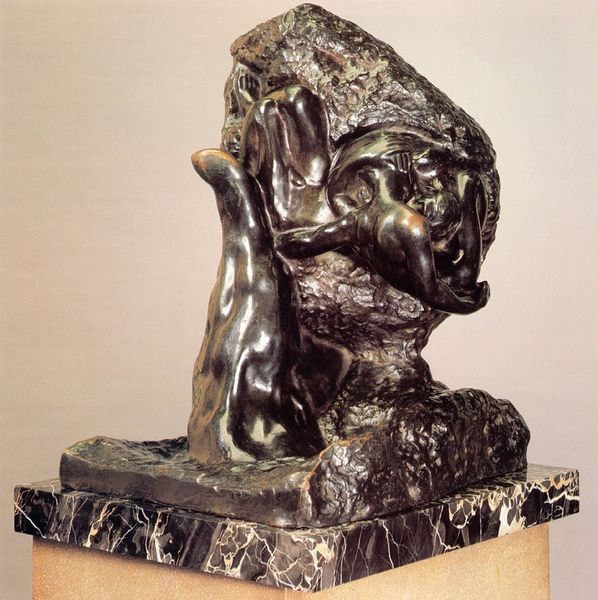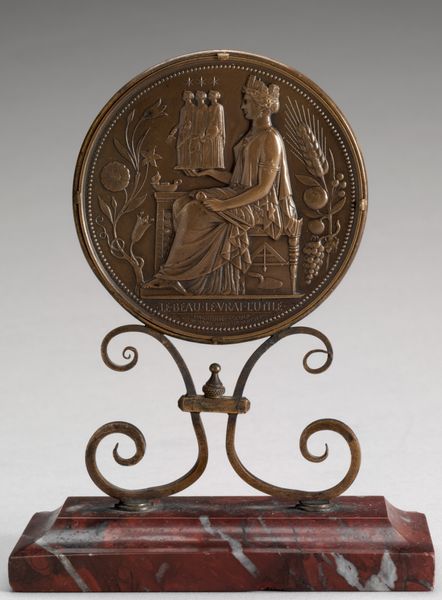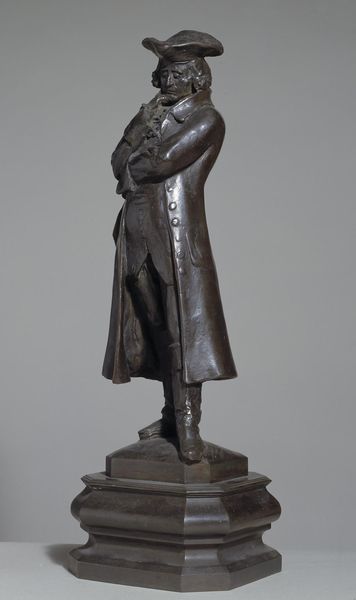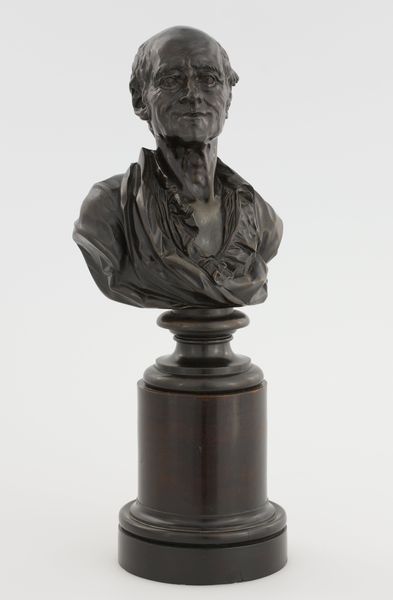
metal, bronze, sculpture
#
portrait
#
metal
#
sculpture
#
classical-realism
#
bronze
#
sculpture
#
men
#
decorative-art
Dimensions: Bronze bust including self-base 6 1/4 x 4 1/2 x 3 in. (15.9 x 11.4 x 7.6 cm.); red marble plinth 6 7/8 in. x 3 1/16 x 3 1/16 in. (17.5 x 7.8 x 7.8 cm.) including a gilt metal fillet running around the bottom of the base
Copyright: Public Domain
Editor: Standing before us is Henri-Michel-Antoine Chapu's "Ferdinand Barbedienne," cast in bronze around 1882. The surface has this cool, almost slick quality, while the figure looks stern. What's your read on its context and intended reception? Curator: Well, consider the rise of industrialism during this period. Barbedienne was not only the subject, but also a significant figure as the owner of a very large and important bronze foundry. This portrait, in a sense, celebrates industry and entrepreneurialism – a shift from honoring only aristocrats or religious figures. The bronze itself is indicative of this new era. Does this challenge traditional ideas of who deserves commemoration? Editor: Absolutely! It is like this monumentalization of the merchant class through artistic mediums like bronze which were usually reserved for other prominent people. It's displayed in the Met, making a statement about who or what we, as a society, consider culturally important, isn't it? Curator: Precisely! How do museums reinforce particular historical narratives and values through what they choose to exhibit? And to take it a step further, think about who had access to commission and own sculptures like these and, by extension, shape public taste? Editor: That's fascinating – the bronze casting process itself reflecting industrial progress, and the choice of subject matter marking a socio-political transition. Thanks, I had never thought about bronze statues as connected to the economy before. Curator: It's easy to see it simply as a portrait. But really it is an artwork enmeshed with the broader social, economic, and cultural forces of the time. Editor: Now I see more layers, thank you.
Comments
No comments
Be the first to comment and join the conversation on the ultimate creative platform.
